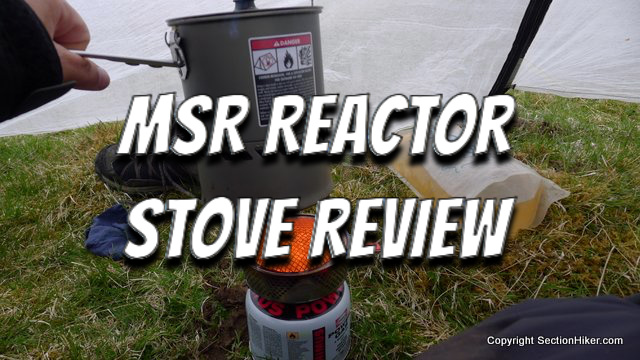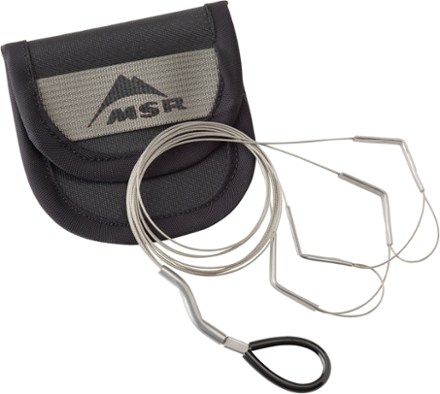MSR Reactor Stove System
Fuel Efficiency
Weight
Simmering Ability
Time to Boil
Ease of Use
The MSR Reactor Stove System is not the lightest weight backpacking stove available or the most flexible because it can’t simmer, but it boils water really fast and is 40% more efficient than most other pot & canister stove combinations. Those two properties make it a very reliable companion on off-the-grid adventures where you to conserve fuel and take the chill off with a hot meal.
Those were the primary reasons I brought it with me when I backpacked 200+ miles across Scotland. Scotland is always very wet, windy, and remote, with few opportunities to resupply. I needed an efficient stove and dependable because I couldn’t resupply fuel canisters easily. It’s the same reason, while I’ll take this stove back to Scotland on my next backpacking trip there.
Specs at a Glance
- Fuel type: Isobutane/canister
- Pot Capacity: 1.7L
- Ignition method: manual
- Priming: no
- Boil time: 0.5 liters in 90-120 seconds
- Burn time: 80 min. / 8 oz. fuel canister
- Weight: 19 oz
It’s also nice that the MSR Reactor Stove System boils water faster than any other stove on the planet (2 cups in 1:30 to 1:45). But that was really a secondary benefit as far as I was concerned. However, it never ceased to amaze my companions, especially when I made a brew out in the open on a windy day!

The Reactor Stove System
If you are unfamiliar with the Reactor, it’s important to understand that it is a complete isobutane gas-powered stove system that comes with an unusual looking stove, an extremely efficient pot with heat exchange fins and a built-in wind screen, a plastic pot lid and a collapsible metal handle. While you can use the pot with another stove, the stove has a special shape that will only work with 1.0 liter, 1.7 liter, or 2.5 liter Reactor Pots. If you already own a Reactor system you can buy the different sized pots separately.
The stove part of the Reactor is compatible with any size or make Isobutane fuel canister as long as it mates to the stove using screw-on threads. This is normally not an issue in the US, but it can be a showstopper in the UK and Europe if you buy fuel canisters with a bayonet-style connector like the ones from Camping Gaz.

The Reactor Stove
The Reactor Stove has a convex heating surface that’s shaped like the surface of the sun instead of a gas burner like most other isobutane canister stoves. When lit, the stove fits into a recessed cavity on the bottom of the specially designed Reactor pots at an optimal distance for efficient heat transfer, eliminating the need for a separate windscreen. It’s really rather brilliant.
There’s also no open flame jumping off the surface the stove’s “radiant” heating element which makes it much safer to use under many tarp shelters that typically have a lower ceiling than many higher walled tents. The reality is that people have to cook inside shelters in bad weather when they go backpacking and it’s not something you can avoid if it’s pissing down rain outside or you need hot food and drink. If you do it though, make sure you have a good breeze blowing through your shelter.
To light the Reactor stove, you need to open the gas valve and use a match or firesteel to ignite the fuel vapor. Unlike a JetBoil, there’s no built-in piezo ignition provided. I only use a firesteel because it always works, even in damp conditions, and I feel that it’s safer than an open flame under a tarp or tent fly. If you’re quick about it, there’s also very little flame up above the Reactor stove surface, making it safer to use in close quarters if you want to avoid burning down your tent or shelter around you.
Although you can regulate how much gas the stove gets, the Reactor is primarily designed for boiling water or melting snow. Simmering is difficult because the Reactor stove goes out when you try to turn the gas down low. The problem is not the stove per se, but the efficiency in which the heat of the stove is transferred to the pot and because turning down the gas does not result in a corresponding drop in the temperature of the liquid inside like other stove/pot combinations.

Why is the pot so much more efficient than a regular backpacking pot? It all boils (har har) down to the way the pot is made, with an integrated windscreen at the bottom, which acts as a double wall around the base of the inner pot. Hot air from the stove is channeled into the recess at the bottom of the pot and up its sides by the heat exchange fins welded to the pot bottom. The hot air contained within the windscreen helps maximize the surface area that can warm the liquid in the pot and continues to heat the contents of the pot even after the stove is turned off!
Knowing this, you can imitate the effect of a simmer by bringing the water in the pot to a rapid boil, adding your ingredients to it, turning off the stove and then letting the contents sit a moment. The hot air surrounding the pot, the hot liquid, and the hot metal of the pot will continue to “cook” the ingredients because the heat exchange fins and integrated windscreen retain heat so well. If needed you can bring the liquid in the pot quickly back to a boil by relighting the stove and then turning it back off to rest and cook the ingredients some more. In essence, the pot is acting like a pot cozy.
This makes it possible to make very simple recipes in the anodized Reactor pots if all you need to do is to rehydrate homemade freezer bag meals, cook ramen noodles, or heat soups. For example, to cook ramen noodles, I typically add about 0.60-0.70 liters of unsanitized water from a stream, turning the stove off when it reaches a roiling boil. I add the noodles, a packet of miso, and 1 ounce of olive oil, then mix them together and let them sit for a minute. Then I turn the stove back on, bring the hot liquid back to a boil, and turn it off to let it “cook” for another minute or two. That’s all it takes to make ramen noodles.
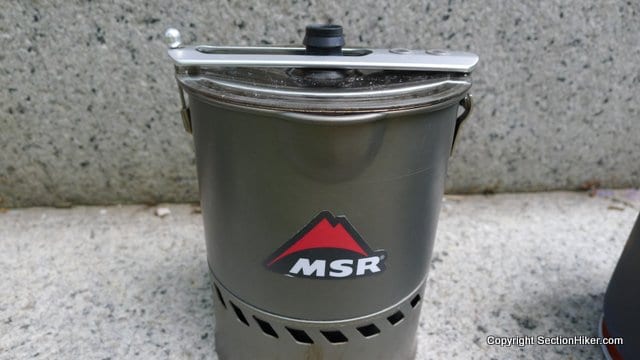
Packability
The handle of the Reactor pot flips over itself and locks down over the top of the pot making it possible to store the stove head, a small gas canister, and a small camping towel (included) as a single self-contained unit for ease of packing. That’s the theory anyway, because the handle slips out of its ball lock easily during transport. In practice, I found it best to store the stove upside down in my backpack to hold the components together using gravity. There’s got be a better way to secure the lid so it doesn’t pop off so easily.
Comparable Canister Stove Systems
| Pot Capacity | Canister Storage | Weight (oz) | |
|---|---|---|---|
| Fire-Maple X1 | 1L | 100g | 18 |
| Fire-Maple X2 | 1L | 230g | 21.2 |
| Fire-Maple X3 | 0.8L | 100g | 21.2 |
| Jetboil Flash | 1L | 100g | 13.1 |
| Jetboil MicroMo | 0.8L | 100g | 12 |
| Jetboil MiniMo | 1L | 100g | 14 |
| Jetboil Sumo | 1.8L | 230g | 16 |
| Jetboil Zip | 0.8L | 100g | 11.75 |
| MSR Reactor 1.0L | 1L | 100g | 16.7 |
| MSR Reactor 1.7L | 1.7L | 230g | 19 |
| MSR Reactor 2.5L | 2.5L | 230g | 20.7 |
| MSR WindBurner | 1L | 100g | 15.5 |
| MSR WindBurner Duo | 1.8L | 230g | 21.1 |
| MSR WindBurner Group | 2.5L | 230g | 20.8 |
Recommendation
At 19 ounces, the Reactor Stove system is not the lightest isobutane gas stove available and it’s difficult to cook complex meals with it beyond soupy backpacking fare or easy 1 pot meals. However, it has a lot going for it in terms of fuel efficiency and windproofness for remote locations and adverse conditions where reliability, fuel efficiency, cooking speed are paramount concerns. I really enjoyed using it on my last backpack trip to Scotland and plan to use it for other similarly challenging adventures in the future.
- Likes
- Insanely fast boil times – as fast as 1:30 for 2 cups of water.
- Built-in heat exchange fins eliminate the need for a windscreen
- Holding onto the pot handle provides excellent stability when cooking on uneven surfaces
- Very little gas flare up when lighting – good in a low-roofed shelter (with good ventilation)
- Heat exchange fin and integrated windscreen provide 40% better fuel efficiency
- Built-in colander in pot lid for draining water
- Pour spout
- Ability to pack 4 oz. fuel canister and stove head inside pot for transport.
- Dislikes
- Best for meals that just require boiling water; true simmering is a challenge
- Requires a fire steel or matches to light
- Difficult to clean plastic top if cooking oily foods
Compare 3 Prices
-
 REI$59.95View
REI$59.95View -
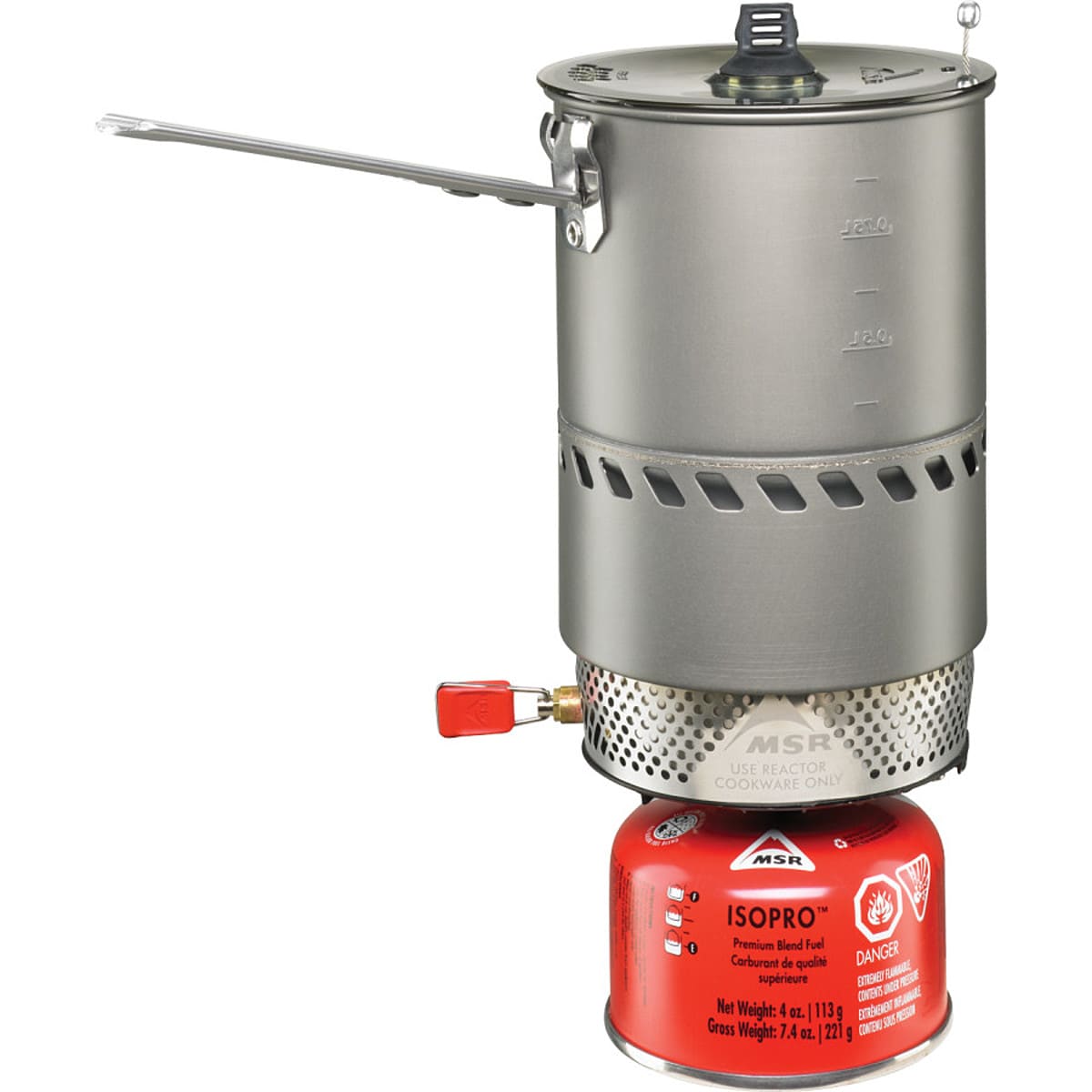
 Backcountry.com$269.95View
Backcountry.com$269.95View -

 Amazon US$309.95View
Amazon US$309.95ViewAmazon.com Price: $309.95 (as of 04/26/2024 09:04 GMT-0400) Details
Product prices and availability are accurate as of the date/time indicated and are subject to change. Any price and availability information displayed on Amazon.com at the time of purchase will apply to the purchase of this product.
-
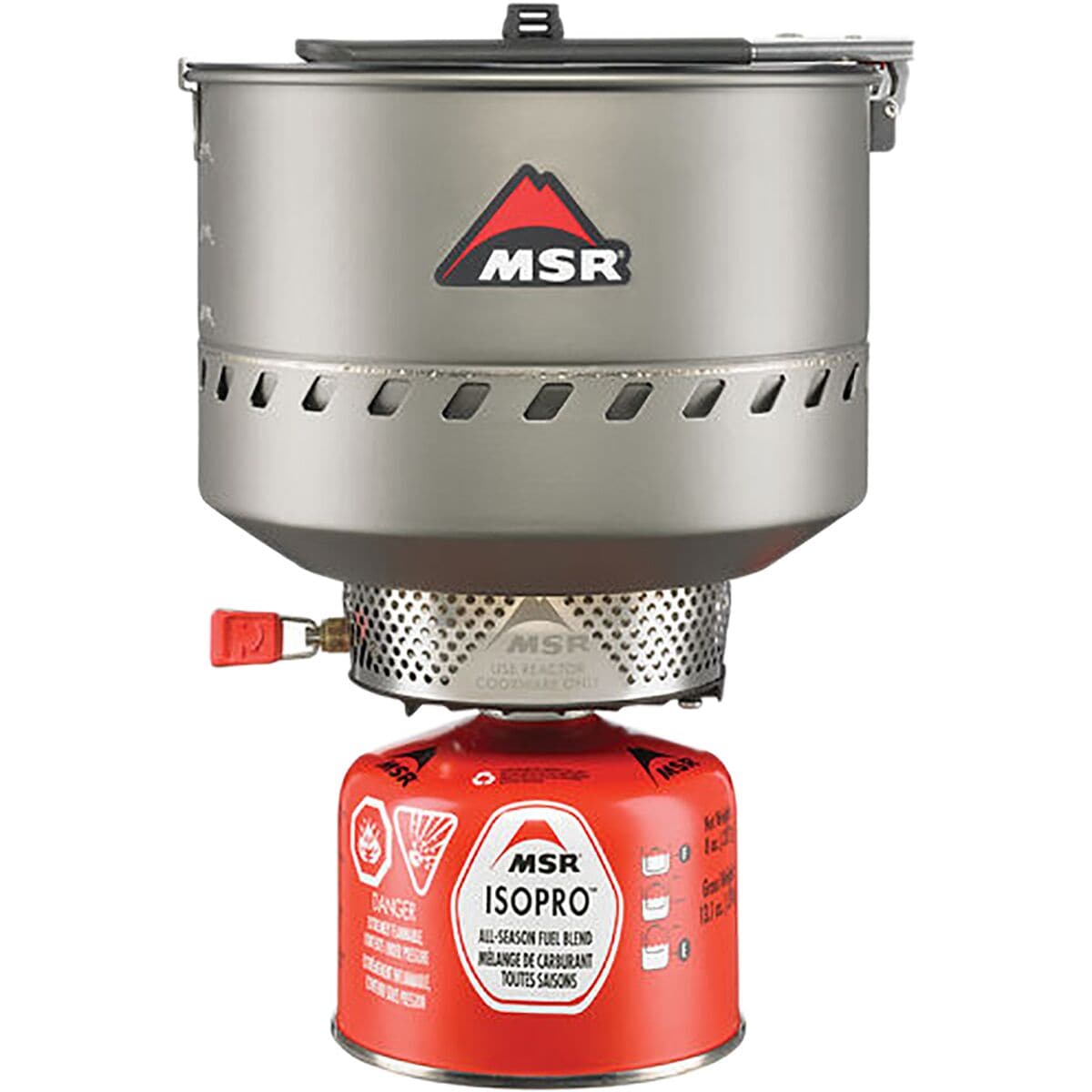
 Backcountry.com$309.95View
Backcountry.com$309.95View
Disclosure: The author owns this stove and purchased it with his own funds.
SectionHiker is reader-supported. We only make money if you purchase a product through our affiliate links. Help us continue to test and write unsponsored and independent gear reviews, beginner FAQs, and free hiking guides. SectionHiker.com Backpacking Gear Reviews and FAQs
SectionHiker.com Backpacking Gear Reviews and FAQs 